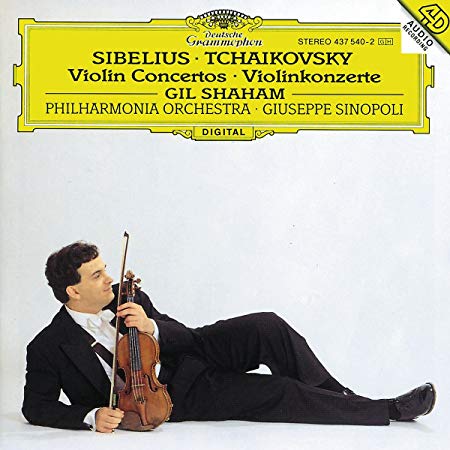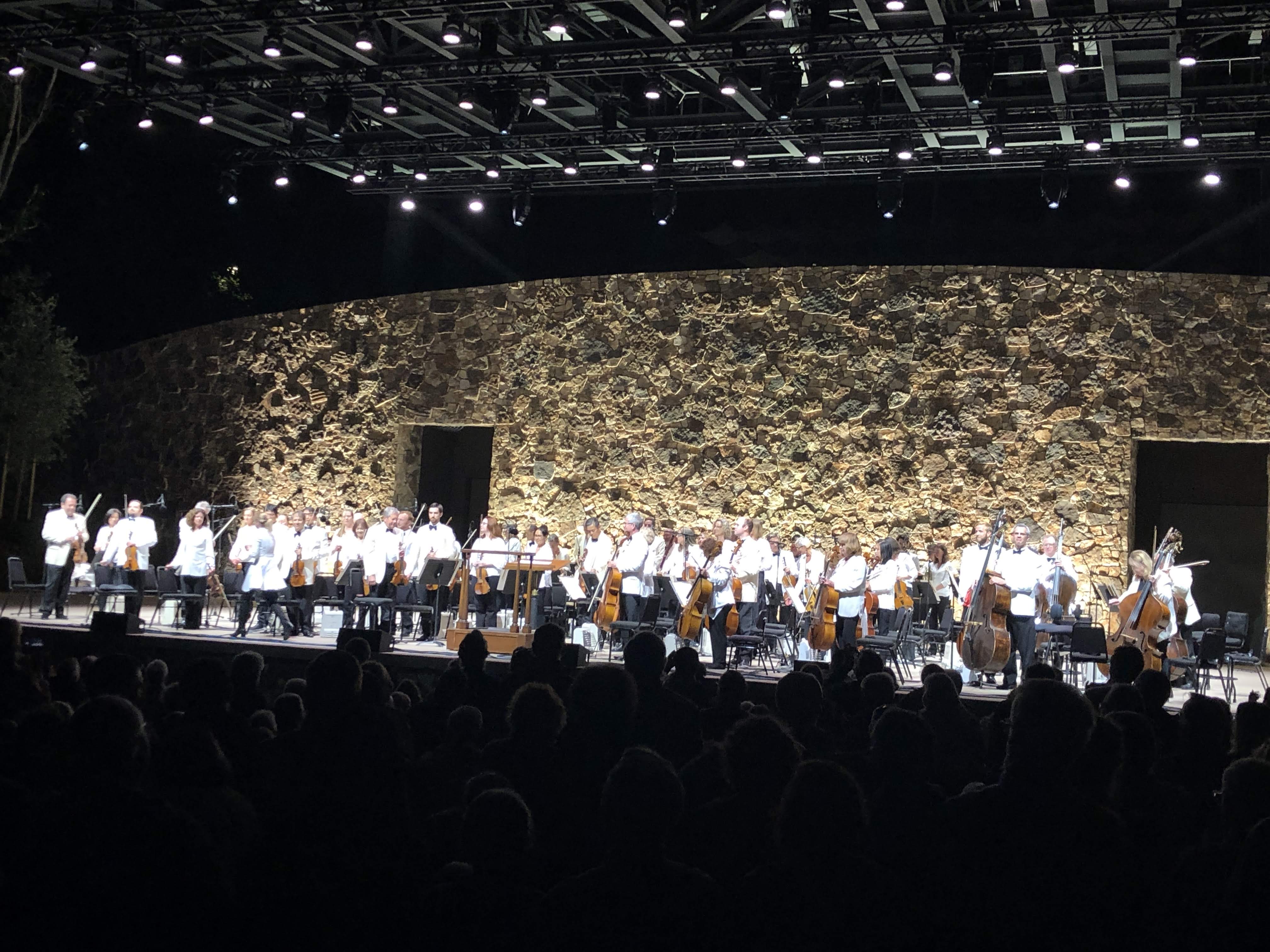Gil Shaham and Tchaikovsky at Frost
July 10 2019We took in a summer concert at the newly re-opened Frost Amphitheater at Stanford University. It was an all-Tchaikovsky concert, with Gil Shaham playing the Violin Concerto, and the San Francisco Symphony with Genna New playing the Polonaise from Eugene Onegin and the Symphony No. 5. It was fun to attend an outdoor symphony concert again (I used to go regularly to Ravinia concerts when I lived in Ravinia).
First a quick note on Frost. It’s absolutely gorgeous inside, with the stage and the general experience newly renovated. As with other outdoor concert setups, there is lawn seating which is first-come first-serve and also a ticketed section closer to the stage. For this concert, we had ticketed seats in a really good location, center, roughly 15-20 rows back. This was the first SFS concert at Frost in several years.
The visuals were good. The stage has a pleasant-looking stone background, and the orchestra is easy to spot. The audio was a bit more challenging. Each section of the orchestra had their own mic, and the balance was unlike what you’d normally hear in an indoor hall. The result is that each individual section would end up too loud (particularly the brass during the louder moments in the symphony). But this also resulted in some interesting experiences, such as the violas coming across really strongly when they would have a section solo.
The logistics around Frost are less good. There were very strict rules around what you can and cannot bring in. For instance, no bags were allowed unless they were completely clear and see-through. We saw many ladies chatting arguing with security when trying to enter, over whether their bags would be allowed in. Also, late seating seemed very generous. Despite the presence of the overture, people were still seating themselves after the Violin Concerto started.
Going in, I wasn’t sure I had heard the Polonaise from Eugene Onegin before, but once the music started, I realized it’s a piece that gets played a lot, probably something I’ve heard on the radio dozens of times. It’s a nice little piece, with strong dancing melodies.
Next came Gil Shaham. I have written extensively about him on this blog. He is my favorite violinist and has been since I was a teenager. One of the early music albums I became obsessed over was Shaham’s recording of the Tchaikovsky Violin Concerto (I was less a fan of the Sibelius on the same album). His tone has always been so clear and bright, with warm vibrato, and the technique necessary to produce nearly flawless intonation. Since his younger days, Shaham’s intonation and articulation are not what they once were. But he still plays with an infectious joy, and it does come across.

One of the recent things I’ve noticed Shaham doing (I started noticing it when I saw him doing the solo Bach) is breaking up chords into multiple bows. They always come unexpectedly, and they only work because his bow arm is so free and flexible. I don’t like all of them, but it’s nice to see new ways of playing an old standby like Tchaikovsky.
I talked about the audio balance and the hot mic earlier. For the concerto, the mic seemed to pick up only Gil Shaham. That was fine with me! It was amazing how good his intonation was in this live performance, especially since we could hear every tiny detail due to the mic.
An interesting little moment came during the first moment. The orchestra was in the middle of a tutti interlude, playing for about a minute before the solo violin comes in again. Except this time, the SFS were noticeably dragging. A few measures before he would come in, Shaham looked at the conductor and started moving his arms in a forward motion, basically to say “move it and speed up!”. The pace continued dragging though. When Shaham came in, he instantly increased the tempo himself by about 30%. Of course the orchestra caught on, but I doubt this type of thing happens indoors (the orchestra probably had difficulty hearing themselves).

The second half brought the Symphony No. 5. This is the only one of the trio (Symphonies 4, 5, and 6) that I haven’t played fully. I was lucky enough to perform the last movement of it in high school. Like the rest of the trio, this symphony is amazing, with beautiful melodies, lots of drama, and memorable climaxes (my favorite is the climax of the second movement).
The SFS played…ok. Certainly there were ups and downs. I’m not sure how high my expectations should be given this is a summer concert (likely many of the musicians are just back from vacation or about to take vacation) and being played in a totally new venue. It was weird that there were lots of bowing mistakes, perhaps they were given new preferred bowings from the conductor. I actually lost track how many major bowing mistakes there were, and they always seemed to happen at climaxes (where musicians would forget if they were supposed to take the extra bow or not). I even saw concertmaster Sasha screw up twice.
Overall, the energy was not high with the orchestra. It was very professional, but there was little engagement with the music or in particular with the conductor.
Finally, we get to the conductor. I had never heard of Gemma New, but in reading her bio, she was a student of Markand Thakar’s at Peabody. Thakar was the conductor of the Duluth Superior Symphony Orchestra while I was a section violinist there, and I hold him in high esteem.
New had a ton of energy all night. She was a little wild in her gestures, waving her arms and trying to elicit more from the orchestra. Interestingly enough, she was even trying to do this during the concerto, when normally conductors just take a back stage to the soloist. Unfortunately, the symphony didn’t really reciprocate. Often they didn’t even look at her. I think to the musicians, this is just a pops concert in the summer, playing a piece that they’ve performed dozens of times already. To Gemma New, this was probably an amazing opportunity to conduct a world-class orchestra. I’d love to see her again with the orchestra in a more traditional setting and playing something much harder that would keep the orchestra engaged.

comments powered by Disqus